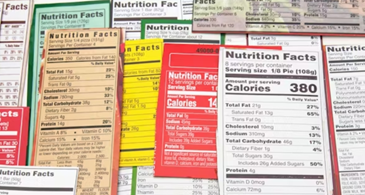Nutritional Value Tables: How to Interpret Them?
Displaying the nutritional value of foods is mandatory in every country. However, the way this information is provided and the regulatory requirements for the content of the table can vary significantly. For example, the regulations are completely different in the European Union and the United States.
Mandatory Nutritional Labeling in the EU:
On the packaging of foods, it is mandatory to display the nutritional labeling, which includes the energy value and the amount of the following nutrients per 100 g or 100 ml of the product:
- Fat
- Carbohydrates
- Sugars
- Protein
- Salt
- Fibers – not mandatory, and is indicated separately from carbohydrates.
Display of Energy and Nutrients Values:
The energy value must be given in kilojoules (kJ) and kilocalories (kcal), while the nutrient values must be given in grams (g).
Uniform Labeling:
The data must be presented in a uniform format, in a clearly visible place, and with a legible font.
Information on Values per Serving:
On a voluntary basis, the nutritional value per serving can also be indicated, but this information must be provided as an addition to the values based on 100 g/ml.
Additional Information:
In certain cases, such as the indication of vitamins and minerals, additional requirements apply.
Information About Nutritional Labeling Requirements in the United States:
Mandatory Information on U.S. Food Nutritional Labels:
- Serving Size: The size of the serving on which the data is calculated.
- Calories: The number of calories in the serving.
- Total Fat: The amount of total fat in grams per serving.
- Saturated Fat: The amount of saturated fat in grams per serving.
- Trans Fat: The amount of trans fat in grams per serving.
- Cholesterol: The amount of cholesterol in milligrams per serving.
- Sodium: The amount of sodium in milligrams per serving.
- Total Carbohydrates: The amount of total carbohydrates in grams per serving.
- Dietary Fiber: The amount of fiber in grams per serving.
- Sugars: The amount of sugars in grams per serving.
- Protein: The amount of protein in grams per serving.
- Vitamins and Minerals: Usually given in micrograms or IU (International Units) per serving.
Voluntary Information:
- Added Sugars: The amount of added sugars in grams per serving.
- Vitamins and Minerals: In some cases, the indication of vitamins and minerals is voluntary.
Standard Quantity:
In the United States, the nutritional values of foods are generally provided per serving, and the nutritional values on the label are also given as a percentage based on a 2,000-calorie daily intake.

